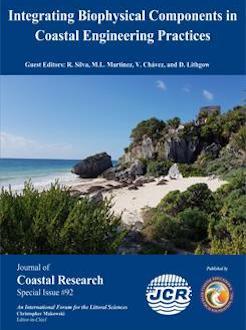García Calva, L.; Golubov, J.; Mandujano, M.C.; Lara-Domínguez, L., and López-Portillo, J., 2019. Assessing Google Earth Pro images for detailed conservation diagnostics of mangrove communities. In: Silva, R.; Martínez, M.L.; Chávez, V., and Lithgow, D. (eds.), Integrating Biophysical Components in Coastal Engineering Practices. Journal of Coastal Research, Special Issue No. 92, pp. 33–43. Coconut Creek (Florida), ISSN 0749-0208.
Conservation of mangrove ecosystems is one of the major global environmental challenges of this century. To propose viable strategies for its conservation, it is necessary to produce an adequate cartography that enables, among other things, accurate differentiation among plant communities. Google Earth Pro (GEP) images were evaluated as a tool to classify different mangrove communities and were compared to RapidEye satellite (RE) images. The accuracy of the following classifications were compared: (1) one based on the normalized difference vegetation index (NDVI) of a RE image, (2) one based on a mosaic of 141 GEP images, both using object-based image analysis (OBIA) and (3) one based on the visual interpretation (VI) of the same GEP mosaic. It was possible to distinguish ten mangrove communities in 2436 ha, six of them dominated or codominated by the white mangrove Laguncularia racemosa, suggesting that this estuary has a strong riverine influence and low salinities. There was a 97% accuracy on the VI of GEP mosaic, significantly higher than the OBIA classifications done on RE (88%) or GEP (80%) images. These results indicate that GEP, an open access resource, provides similar accuracy when mapping mangrove communities compared to commercial images such as RE, and that the accuracy is greater when using VI. GEP images are very important tools to generate accurate and detailed large scale maps of mangrove communities and represent a great opportunity to move along in the challenge of identification, mapping and monitoring these valuable ecosystems.





